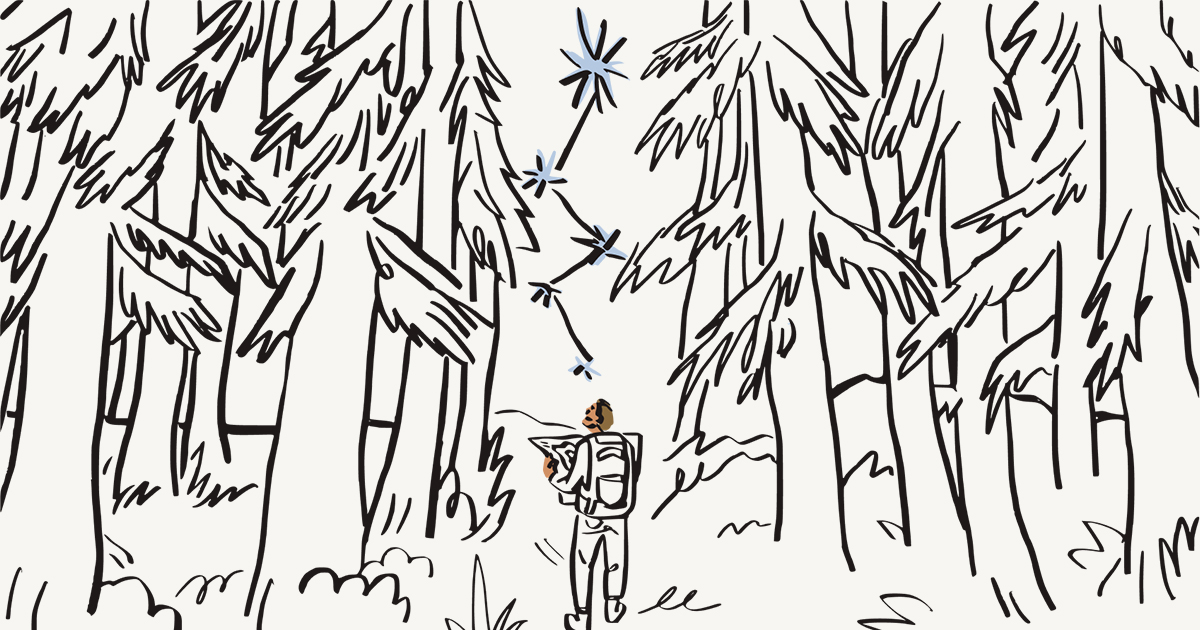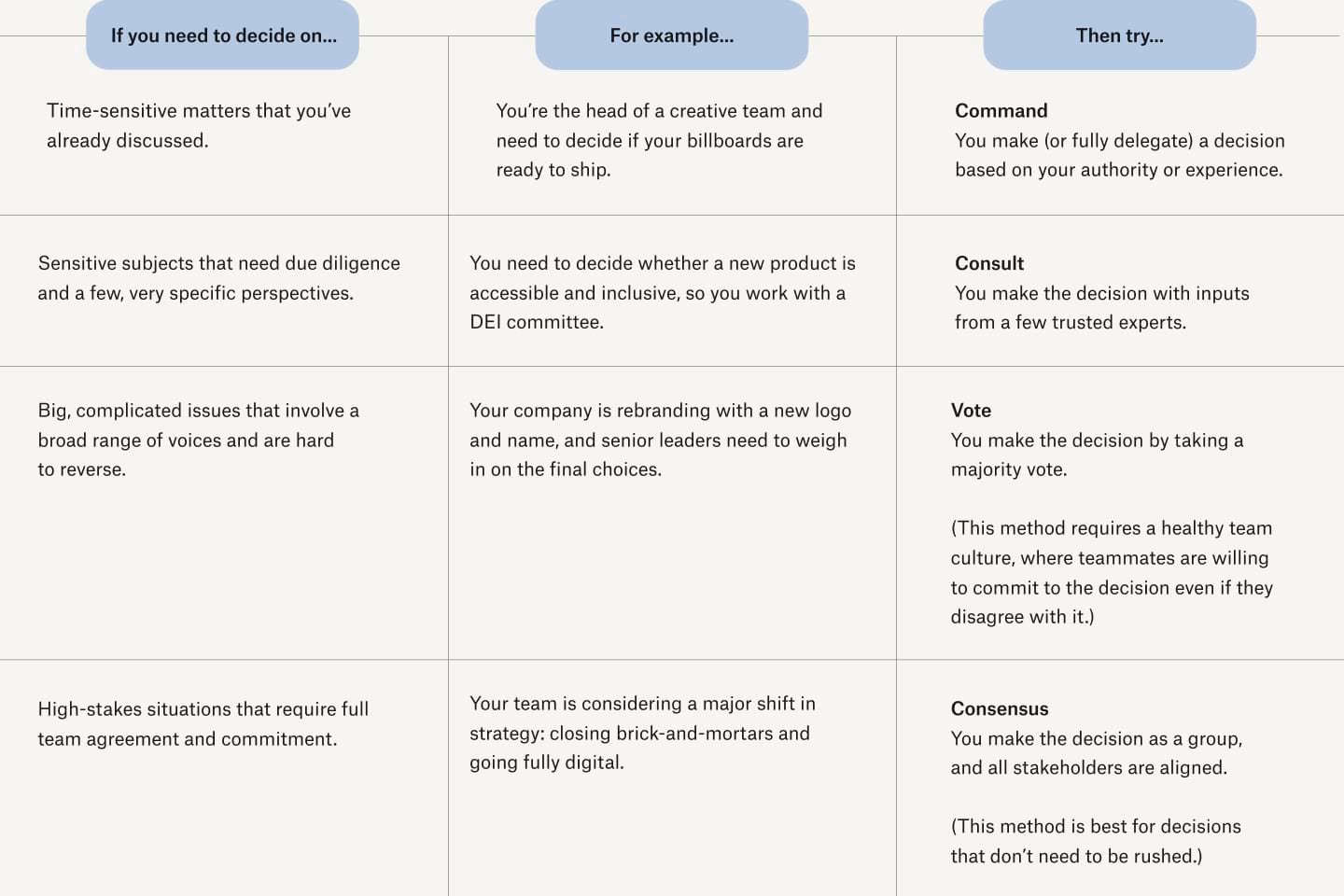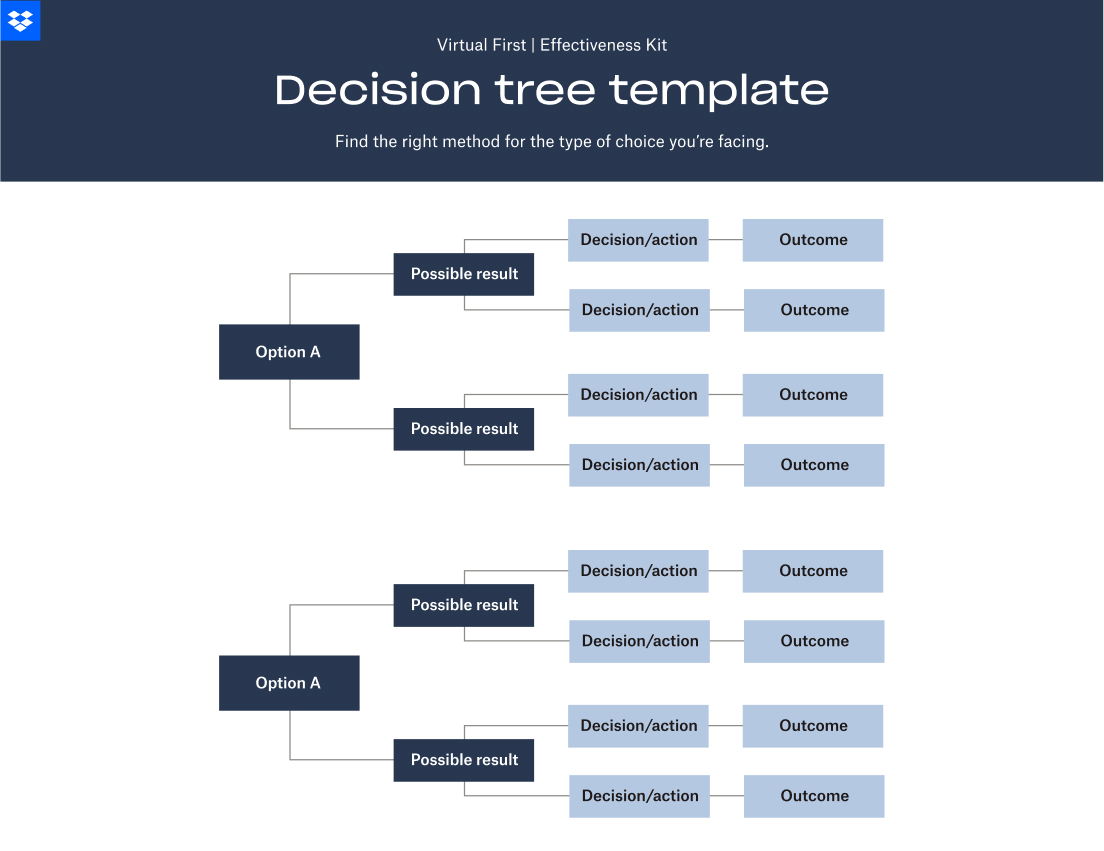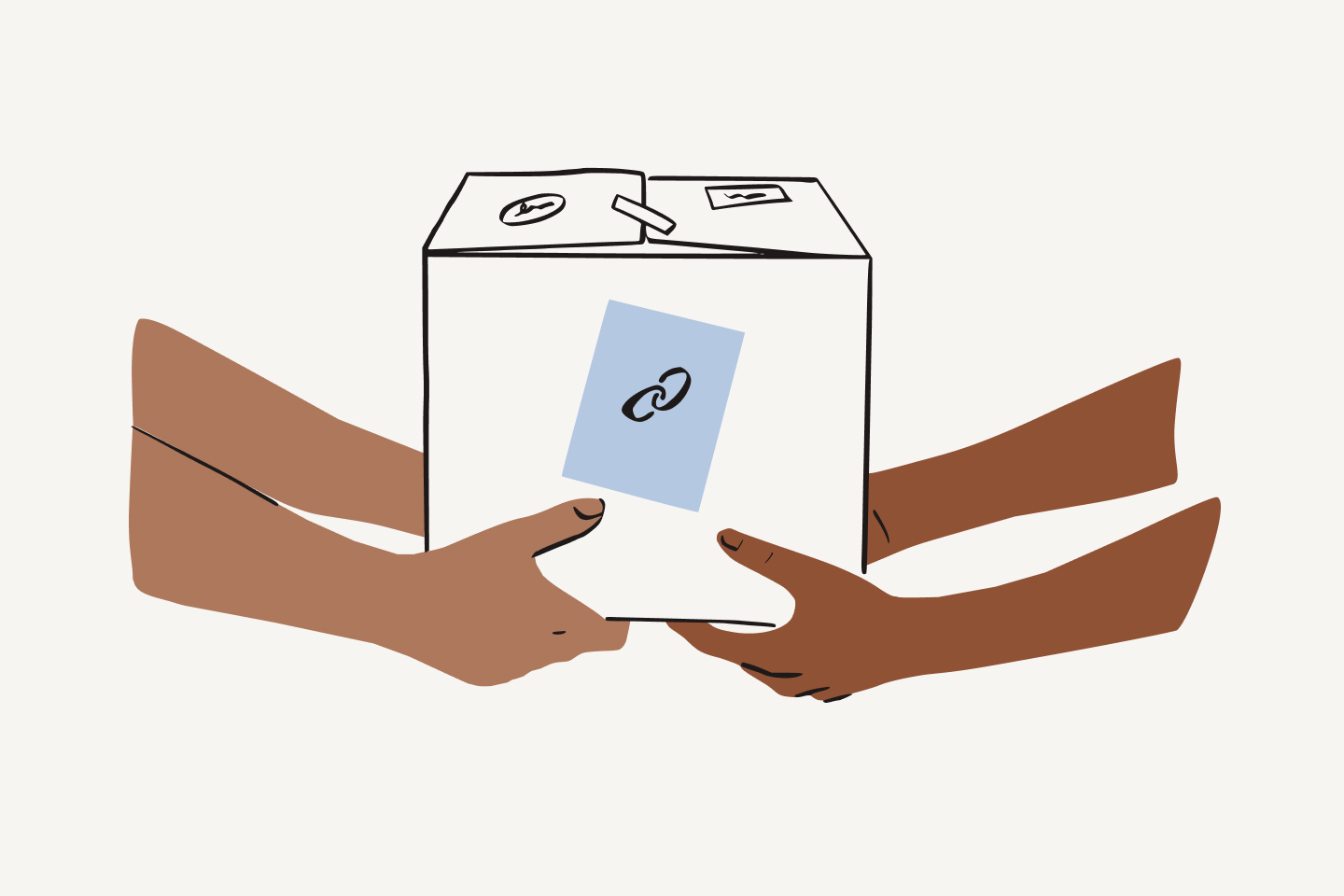Step 1: Ask yourself if it’s really a big decision
Broadly speaking, there are two types of decisions. Type 1 is an irreversible decision that’s very difficult to change or take back. For example: rebranding your company, quitting your job, discontinuing a product line, or getting a tattoo. Type 1 decisions often set a permanent change in motion, so approach with care.
Type 2 is a reversible decision, such as when to schedule a meeting, which shoes to buy, where to stay on vacation, or what to have for dinner. The stakes are pretty low, and you’re not necessarily locked in. Most decisions fall into this category—even if it doesn’t seem like it.
This practice is for the deciders of those big Type 1 decisions. But you may still find it helpful if a small decision is tripping you up.





